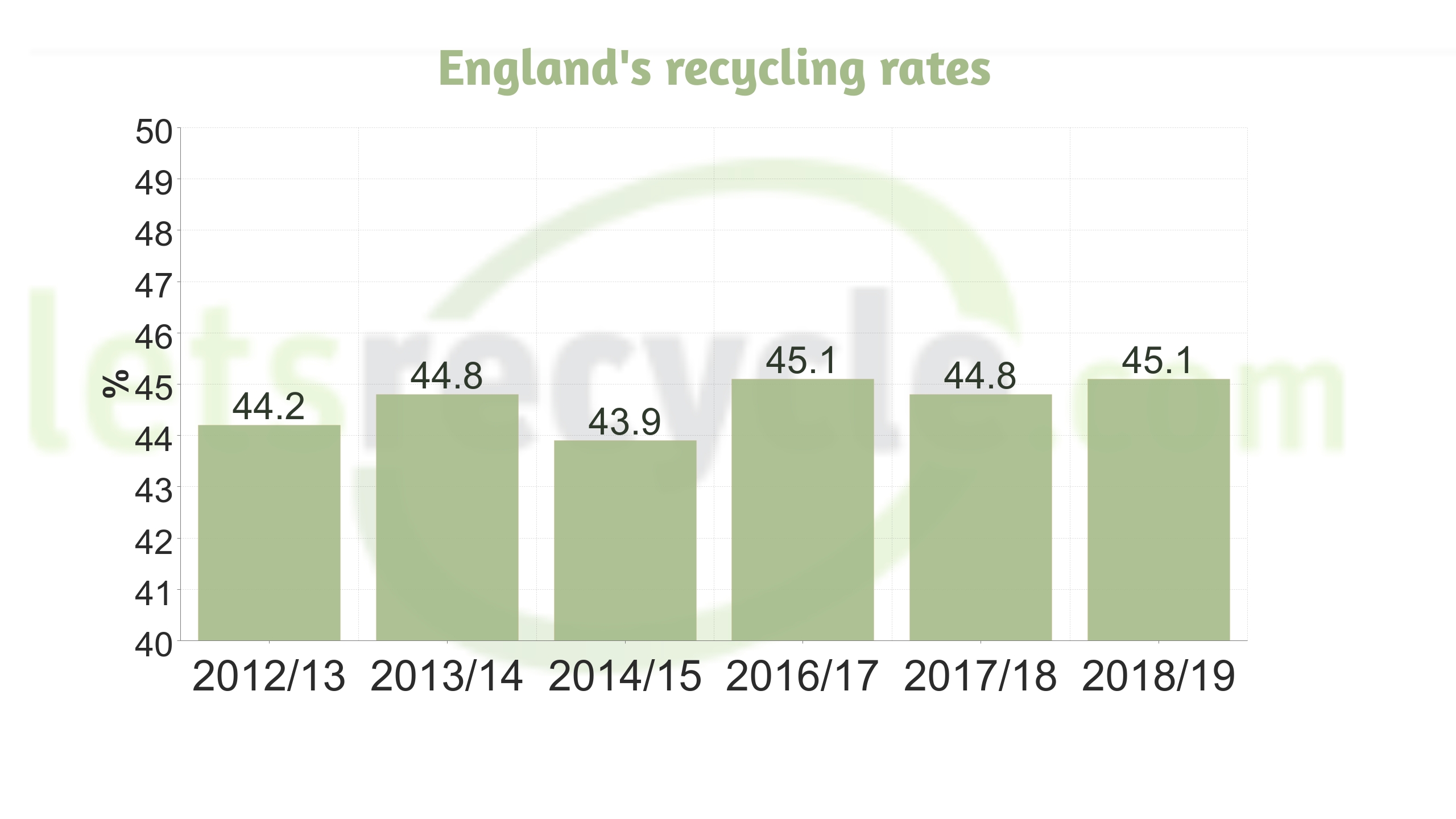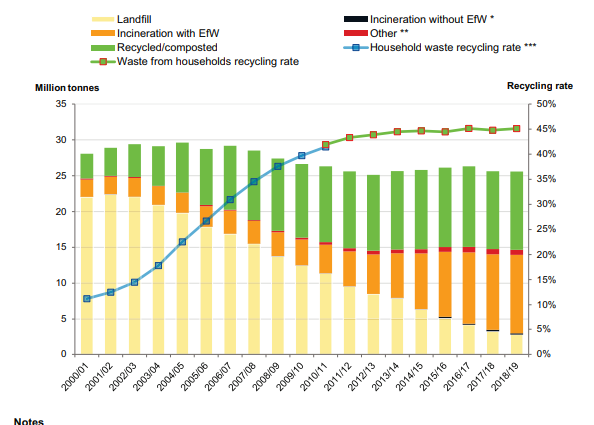England’s household waste recycling rate has risen marginally by 0.3% to 45.1% in the 2018/19 financial year, compared to 44.8% in the previous period.
Official figures released this morning (November 28) also show that East Riding of Yorkshire was again the council with the highest recycling rate at 65%, while Newham had the lowest at 17%.
Lewes district council saw the biggest jump in its recycling rate for the year, moving from 27% to 40%.
 England
England
According to the Defra statistics, the national recycling rate increase was boosted by a rise of 0.6% in the tonnage of dry recycling, which includes Incinerator Bottom Ash (IBA).
Dry recycling includes paper and card, glass, plastic, WEEE, scrap metals including those reclaimed from IBA, as well as other materials.
However, the amount of organics sent for recycling decreased by 0.5%, largely due to a 16.7% drop in tonnage during the summer of 2018 “which saw long periods of hot weather, stunting plant growth”, Defra said.
While an increase will be welcomed by Defra, it means England’s recycling rate returns to the same level it was during the 2016/17 year, with rates plateauing over the last eight years.
Councils
Looking at individual local authority data, the figures show that East Riding of Yorkshire was top for the third year running, achieving a 65% recycling rate and increase of 0.5%. It was closely followed by South Oxfordshire and Three Rivers, which both achieved 63%.
Meanwhile at the other end of the scale, despite Newham’s recycling rate increasing by 2.9% to 17%, it remains the worst performing council .
The second lowest ‘household waste’ recycling rate was recorded by Barrow-in-Furness borough council with a rate of 19%, while Westminster was the third worst performing on 22%, up from 18.8% last year.
This means that Westminster and Barrow-in-Furness have swapped places in the bottom three from last year’s data.
Increase
The local authority with the highest increase in household waste recycling rates in 2018/19 compared to the year before was Lewes district council in East Sussex. Its recycling rate jumped by 13 percentage points from 27 to 40%.
The next biggest jumps were seen by Torridge district council and the London borough of Croydon, which achieved 10 and nine percentage point increases respectively.
Regions
Replicating data from previous years, it was the London boroughs with the lowest rates in England, recording a combined 33.4%. While Newham was the lowest, Bexley was the highest with 54% (42% of which was organics).
The region with the highest ‘household waste’ recycling rate in 2018/19 was the South West at 50.1%. Stroud district council was the highest in the South West with 60%, while Exeter was the lowest with 27%.
All regions reported a modest increase in their household waste recycling rates with the exception of the East Midlands and Eastern region which both recorded marginal decreases of 0.4 and 0.5 percentage points respectively.
Landfill
As outlined in the table below, the data also shows the amount of waste being sent to landfill or incineration in the UK.
The data shows that for all local authority waste, which includes street sweepings and municipal parks and gardens waste, 10.8% was sent to landfill, while 43.8% was incinerated. Less than 1% was sent for ‘incineration without energy from waste.
Calendar year
The data released by Defra also includes that of the 2018 calendar year.
The official England ‘waste from households’ recycling rate was 44.7% in 2018, down 0.5 percentage points from 45.2 per cent in 2017.
Defra said the fall was driven by reduced tonnages of ‘other organics’, caused by the prolonged cold spell at the start of the year and long, hot summer.
Separately collected food waste rose by 7.1 % to 414 thousand tonnes in 2018 compared to 2017. However, it remained only a small proportion of total ‘waste from households,’ at 1.9%.
The calendar year ‘waste from household’ data is included for “continuity” and is what the EU uses to provide “a consistent approach with which to report household recycling rates at the UK level under the Waste Framework Directive (2008/98/EC)”.
The post England’s recycling rate creeps upwards appeared first on letsrecycle.com.
Source: letsrecycle.com Waste Managment




